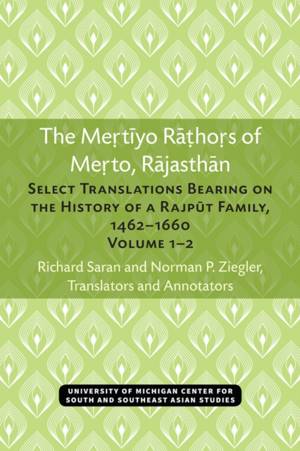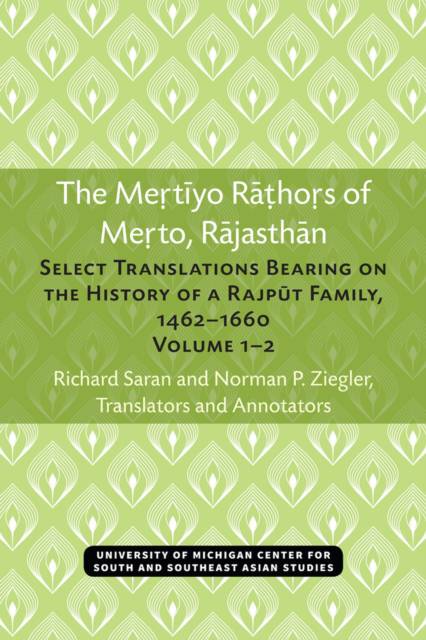
- Afhalen na 1 uur in een winkel met voorraad
- Gratis thuislevering in België vanaf € 30
- Ruim aanbod met 7 miljoen producten
- Afhalen na 1 uur in een winkel met voorraad
- Gratis thuislevering in België vanaf € 30
- Ruim aanbod met 7 miljoen producten
Zoeken
The Mertiyo Rathors of Merto, Rajasthan
Select Translations Bearing on the History of a Rajput Family, 1462-1660, Volumes 1-2
Richard Saran
€ 33,95
+ 67 punten
Omschrijving
The Meṛtīyo Rāṭhoṛs of Meṛto, Rājasthān is a treasure for scholars of Rajpūt history. Richard D. Saran and Norman P. Ziegler, whose contributions to Rajpūt studies are well known to specialists in the field, have given us a work of deep and exacting scholarship. It is the culmination of decades devoted to the study of Middle Marwari chronicles from Rājasthān. The sources translated here provide access to the fortunes of a branch of the Jodhpur royal family, and in doing so they illuminate the larger world of Rajpūts in the middle period. The Meṛtīyo Rāṭhoṛs are significant for several reasons. Their story traces the emergence of a Rajpūt brotherhood into local prominence and follows the establishment of their kingdom on the eastern edge of Mārvāṛ as a defined territorial unit. The evolution of the Meṛtīyos as a brotherhood passed through several clearly defined stages, including a relationship with the house of Jodhpur that ranged from mutual support among brothers to hostility and clear separation. A study of the Meṛtīyos in this context provides a unique view of the formation of a strong and indpenedent Rajpūt cadet line, of the establishment and defense of a local territory, and of the internal relations among Rajpūt brotherhoods regarding issues of precedence, honor, patronage, and service. The translations are accompanied by an extensive explanatory apparatus taking various forms, which includes a valuable essay on Rajput social organization, complete genealogies, and biographies of all the major personages of the chronicles.
Specificaties
Betrokkenen
- Auteur(s):
- Uitgeverij:
Inhoud
- Aantal bladzijden:
- 854
- Taal:
- Engels
- Reeks:
Eigenschappen
- Productcode (EAN):
- 9780472038213
- Verschijningsdatum:
- 19/01/2021
- Uitvoering:
- Paperback
- Formaat:
- Trade paperback (VS)
- Afmetingen:
- 152 mm x 229 mm
- Gewicht:
- 1229 g

Alleen bij Standaard Boekhandel
+ 67 punten op je klantenkaart van Standaard Boekhandel
Beoordelingen
We publiceren alleen reviews die voldoen aan de voorwaarden voor reviews. Bekijk onze voorwaarden voor reviews.











